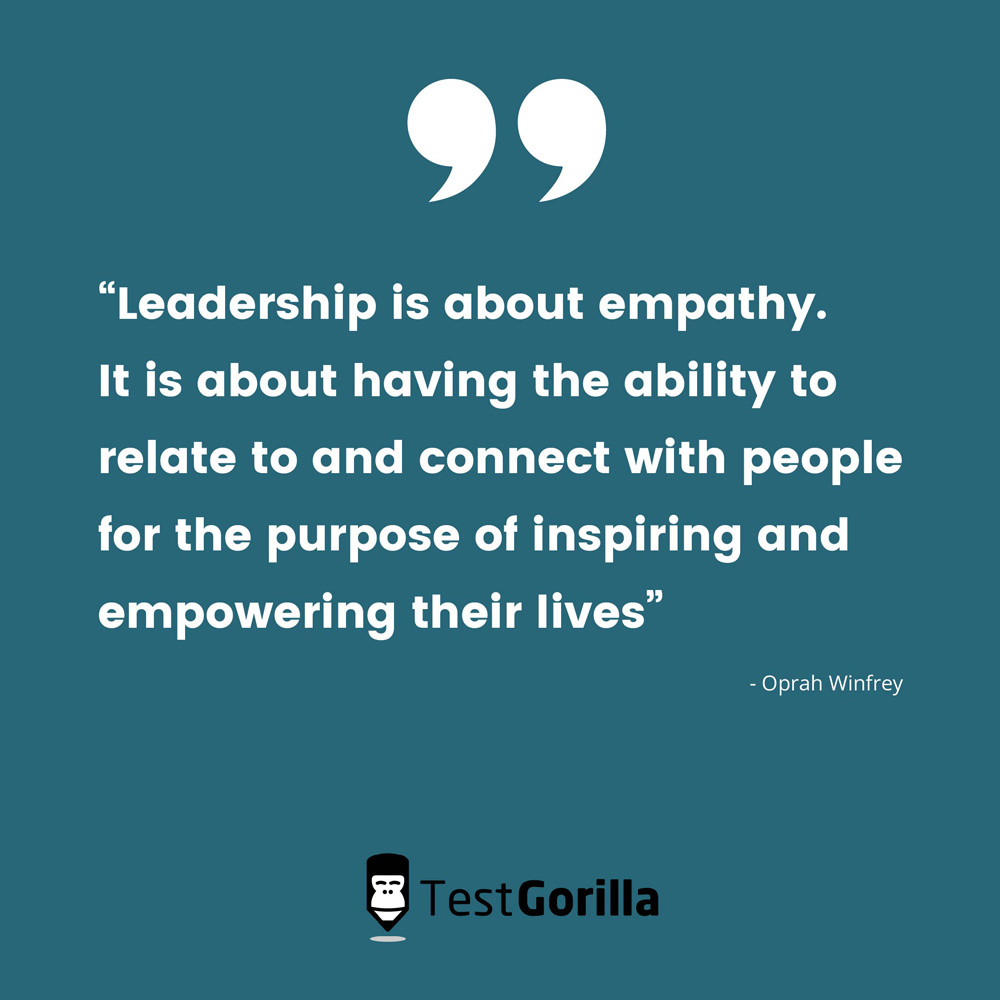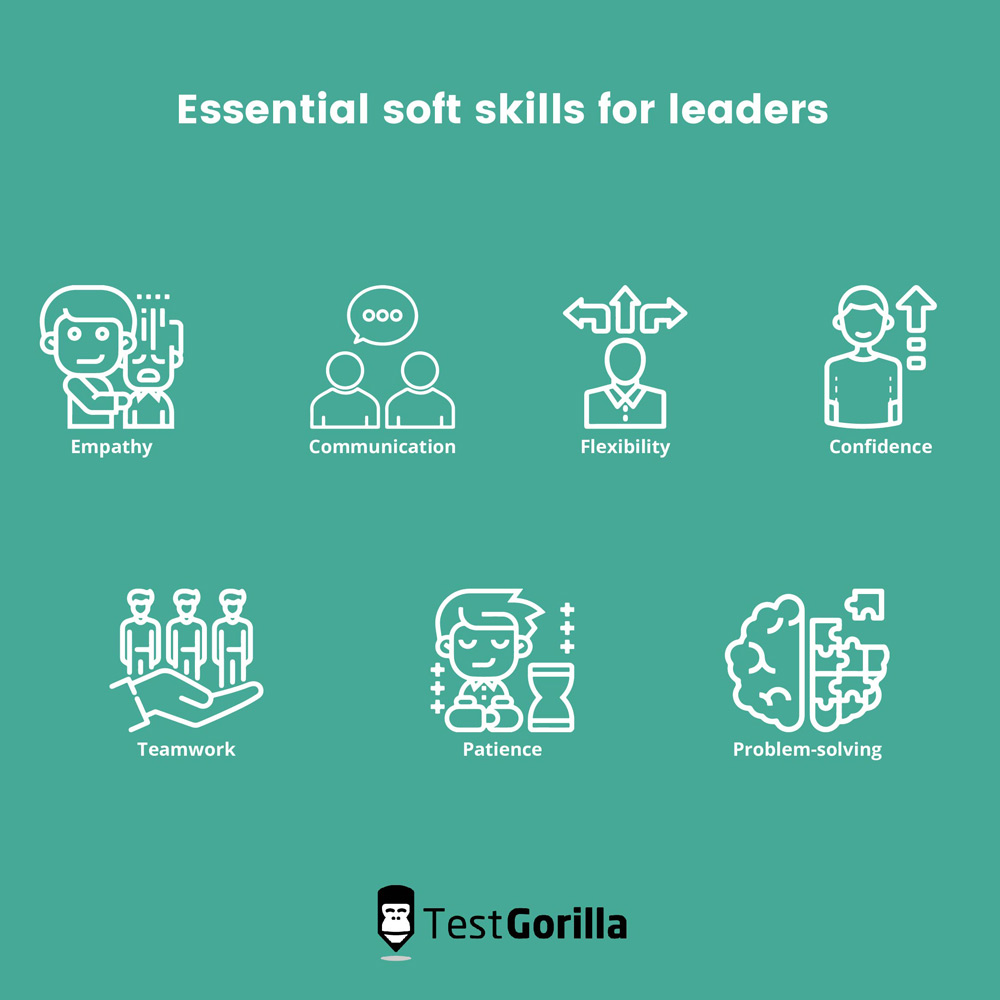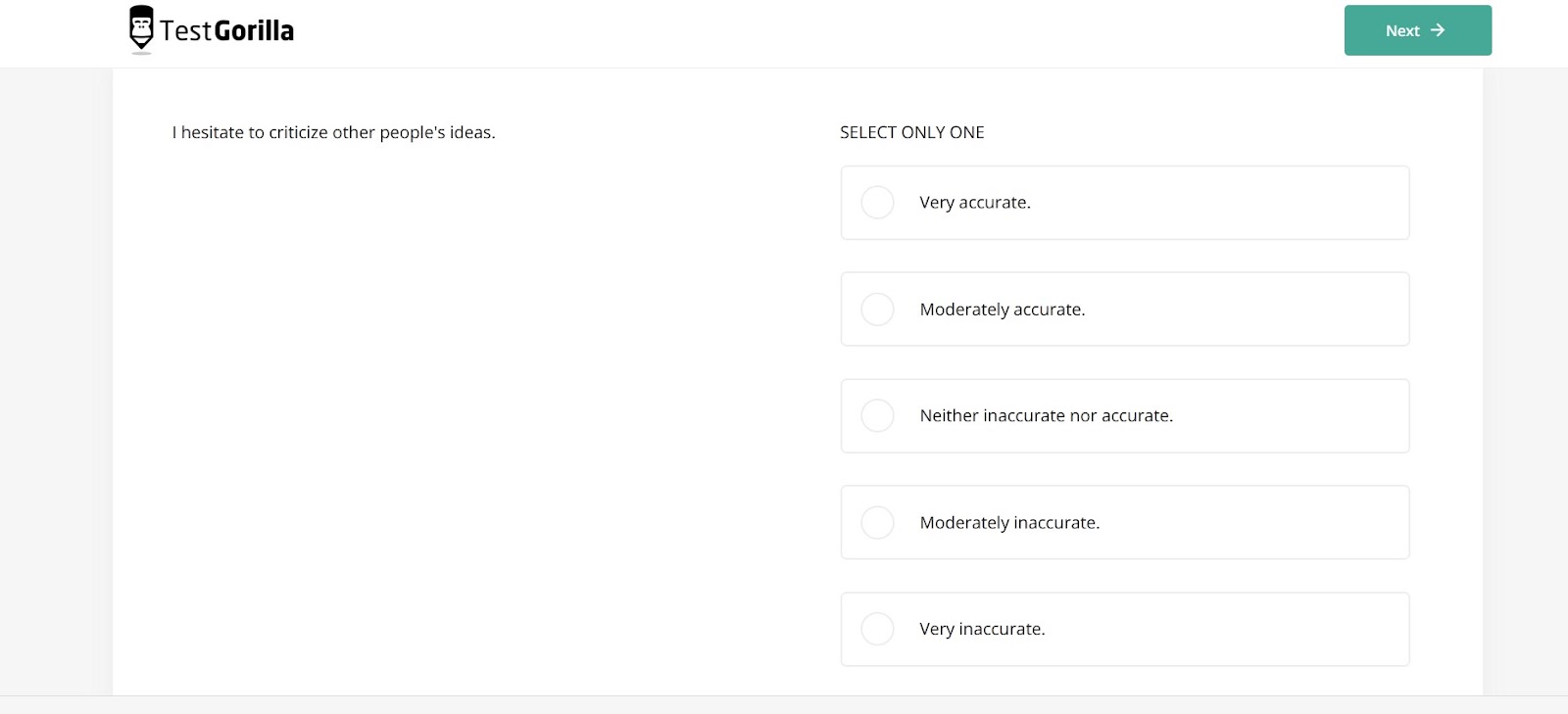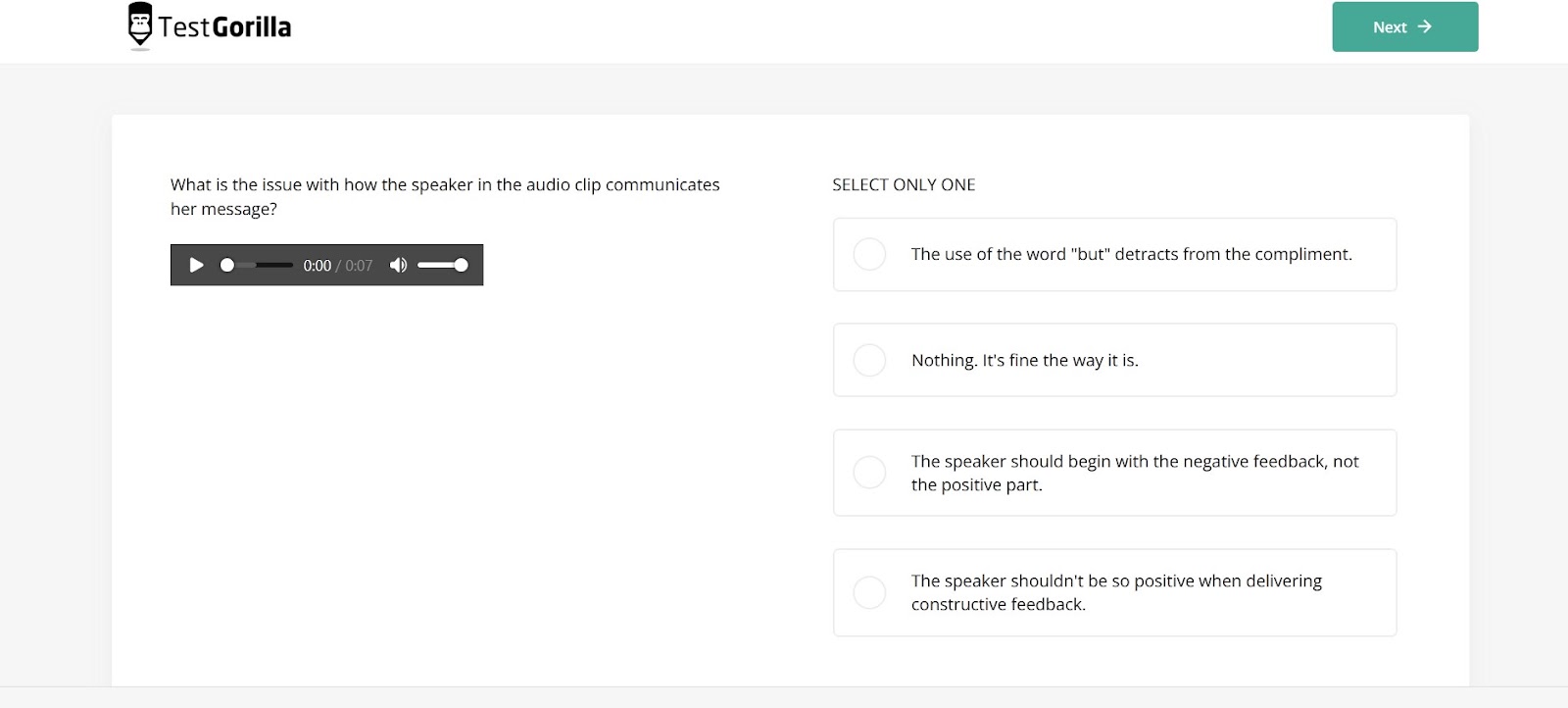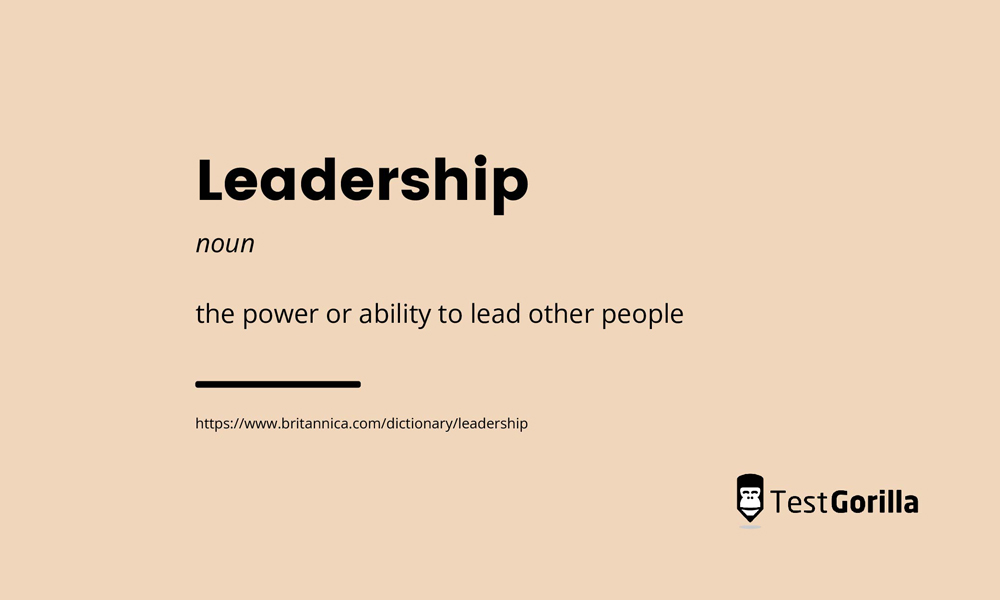Are good leaders born, or can they be made? Does an effective leadership and management test exist?
While some lucky folks undoubtedly come into the world with natural leadership skills, the good news is that leadership skills can be developed.
Leadership development is a way to take someone with the potential to be a leader and nurture that growth so they can achieve results and empower others. This development is essential in any organization, but it doesn't happen by accident.
To be effective, leadership development should be a continuous process that includes challenges, evaluation, and feedback.
While many organizations choose to promote internal leadership candidates, a significant number of them don’t provide the support that budding leaders need to really become strong in their role.
With that in mind, this article is going to take a deep dive into all things leadership. And, yes, you’ll be pleased to know that a scientifically-backed management test not only exists, but it is the fastest and easiest way to evaluate leadership candidates.
You’ll learn the benefits of developing leaders, as well as how to bring out their potential, and how TestGorilla’s management test works.
Table of contents
- Situational leadership theory
- Four leadership styles
- What makes a good leader?
- Why developing effective leadership skills matters
- How to develop leadership skills
- Why do soft skills matter at work?
- Testing your job applicants for soft skills
- Leadership development: Laying the foundation for the future with a management test
Situational leadership theory
There are various shades of gray on the leadership scale. There are plenty of examples of aggressive, fear-inspiring leaders throughout history who got the job done, but at the expense of their employees’ respect and mental health.
In contrast, the situational theory of leadership model was created by Paul Hersey and Ken Blanchard. This theory suggests that no one specific style of leadership is the best. Instead, the leader is flexible, adapting their management style to suit relationships and tasks.
TestGorilla’s Leadership & People Management test is based on the Hersey/Blanchard model. The test asks candidates to evaluate factors to decide which of the four leadership styles to use in different scenarios based on the needs of each situation.
One of the crucial factors in being able to make the situational theory work is a leader’s ability to adjust their style according to the groups of employees they are working with. Some employees may not need, (or be comfortable with), a lot of rules and guidance to get tasks done well, while others are happiest with clear directions and close supervision. It’s up to the leader to evaluate and make that call successfully.
Four leadership styles
Hersey and Blanchard developed four leadership styles within the situational leadership model. Depending on the needs of the employee, a leader may use several of the leadership styles within their team. One of the big benefits of situational leadership is that it enables leaders to customize their approach to suit the person.
1. Delegating
This is a method of leadership that empowers employees to make their own decisions and prioritize work themselves. This is a great approach for experienced and confident workers who enjoy the challenges involved.
2. Telling and directing
This style is the opposite of the delegating approach. The leader defines the tasks to be done, and gives clear instructions on how to complete them. The leader supervises closely when using this method, and it’s an ideal style to apply to inexperienced employees who may not feel confident in their abilities yet.
3. Selling and coaching
When a leader uses this style they assign tasks and roles, but are open to input from workers. This is a great way to develop team members who may be experienced, but lack self-esteem. This approach enables leaders to provide encouragement and feedback while still monitoring the employee closely.
4. Participating and supporting
Leaders who use this method provide only minimal amounts of supervision after providing clear instructions. This enables a worker to control how the work is done, and is a good choice for experienced employees who may be struggling with role changes or new projects.
The best insights on HR and recruitment, delivered to your inbox.
Biweekly updates. No spam. Unsubscribe any time.
What makes a good leader?
It depends who you ask, but the best leaders share some common traits and skills in both their professional and personal lives:
They develop skills and experience both within themselves and others
Honesty and integrity is of utmost importance to them
They are skilled communicators
Treat people with respect, even in challenging situations
They are empathetic
When it’s hard to speak up, they have the courage to do so and they have faith in their beliefs
They make hard choices and self-sacrifice to improve the lives of others
Focus on helping their team succeed
They don’t lead by fear or force
Lead by example and inspire others to succeed
Why developing effective leadership skills matters
“Oh, they’re a born leader!” How often have you heard someone say this about a person? However, finding natural-born leaders is hard.
Even if you do, they may be great performers and good at producing results, but they may not have the leadership soft skills needed to be truly great leaders. Or, they could just need some help with developing those skills.
Developing leaders from within your organization carries many benefits. Leadership development boosts employee engagement, but a manager without good leadership skills will find it hard to keep high-performing employees.
It’s also much less expensive long-term to develop and promote leaders internally than to hire someone from outside. Current employees already have a head start by knowing the organization’s culture, people, and goals.
How to develop leadership skills
Leadership development is an ongoing process, not a one-off event. Leadership development should include coursework and formal training, but that’s just one area of learning. For it to be successful, there are other things that need to be covered.
You may have heard of the 70-20-10 framework for leadership development, which is a classic research-based strategy for developing leaders:
70% challenging experiences and assignments
20% developmental relationships
10% training and coursework
This approach says that leadership can be learned and that you don’t need to be a born leader to succeed.
Why do soft skills matter at work?
Many essential leadership and management skills can be improved over time, such as strategic thinking, goal setting, and communication. The importance of soft skills like emotional intelligence, adaptability, and clear communication for leaders shouldn’t be underestimated, either.
Have you ever been treated by a super-competent doctor and been impressed with their medical skill, but left with the feeling that their bedside manner needed some serious work? Chances are you’ll ditch that doctor for an equally competent doctor who makes you feel comfortable and at ease instead.
All professionals need soft skills to succeed, yet it’s an area that many are lacking in. The soft skills gap carries a hard truth for job seekers and recruiters alike – they can make the difference between getting hired or rejected, and they can also play a huge part in whether a company succeeds or not.
The stats from LinkedIn’s Global Talent Trends report 2019 discovered that 92% of recruiters say soft skills matter as much or more than hard skills when they hire, and 80% say they’re becoming more important for company success.
Testing your job applicants for soft skills
What are the top soft skills for different industries, and how do you assess them accurately, though? It’s a problem many organizations struggle with, and there are many who don’t have a formal process in place to measure soft skills.
If you are looking for a way to help assess someone’s soft skills, consider using screening tests as part of your evaluation. Used alongside cognitive ability and situational judgment tests, they will help give you a rounded picture of a potential leadership candidate.
Screening tests tend to be more objective than interviews, ensuring all candidates are tested on a level playing field, and they help remove unconscious bias in the hiring process. Some useful soft skill screening tests include
Big 5 (OCEAN) – This big 5 personality test follows the Five-Factor Model. It evaluates five dimensions of personality, which are openness, conscientiousness, extroversion, agreeableness, and emotional stability, and is a fascinating insight into personality traits
DISC – this test is based on the model developed by psychologist William Marston for behavioral assessment. It shows how we express emotion in the four behavior types of DISC: Dominance (D), influence (I), steadiness (S), and conscientiousness (C), and will help you understand candidates and team members better.
Communication test – assesses candidates in both written and verbal communication, as well as non-verbal cues and active listening. Those who do well on this test can listen effectively, offer empathy and feedback in an appropriate way, and can communicate confidently
The screenshots below show some of the preview sample questions that candidates are asked during the tests:
This is a sample question from the Big 5 test, and below is one from the DISC test:
The screenshot below shows how audio clips can be used to evaluate the test-taker’s listening and interpretation skills as part of the Communication test:
Can soft skills be learned?
OK, you’ve got your eye on developing a leader from your workplace. You see potential. They have all the technical management skills to be a great leader, and you are sure they will ace a management test but unfortunately, their soft skills could do with some serious sharpening. Can emotional intelligence, good communication, interpersonal skills, teamwork, and adaptability be learned?
The good news is that they can be developed and improved, as long as the person in question is capable of recognizing where their weak spots are, and also be willing to work on improving them. Here are 10 strategies to improve soft skills that apply to everyone, not just potential leaders:
Decide which skills need improvement. It’s unlikely that all of your soft skills need improving, so define and concentrate on the ones that do.
Ask trusted friends or colleagues for feedback. It’s hard to judge ourselves objectively about our strengths and weaknesses. Their fresh perspectives may give insight into areas you weren’t aware needed improvement.
Listen to understand. Active listening is a valuable soft skill, and the goal is to listen well enough to show the other person that you understand their point of view, even if you don’t agree with it.
Take time to self-reflect. Think about situations when someone seemed to take what you said the wrong way, or where you didn’t get the response you wanted.
Take an online course. There are many online resources out there to help you improve your soft skills.
Leave your comfort zone. Most of us are able to communicate better and feel more confident when we’re comfortable. The hard part is doing it when we’re in a setting we don’t like, but pushing ourselves to sign up for a group activity or go to a new social setting will help you improve your soft skills.
Communicate as much as you can. The more you communicate, the better at it you get. The reverse is also true. Use it or lose it, as the saying goes.
Leadership development: Laying the foundation for the future with a management test
Effective leadership results in a strong team and increased productivity, as well as boosting morale and motivation throughout the organization. Recruiting leaders from within your team will save your organization money and time in the long run, and even established leaders can benefit from development and training.
Our skills tests are a good first step on the way to identifying which candidates have leadership potential, from the management skills test to the communication and personality tests. Of course, tests are just part of the bigger hiring process, but they will narrow down those applicants in the fairest and most bias-free way possible.
You can rely on TestGorilla to make the tests as good as they can possibly be. We have subject-matter experts to create them, and they are then evaluated by another expert in that field. That’s not all, though. The test then goes through many feedback rounds before being entered into our extensive test library.
If you want to know more about personality testing, then why not read our guide on how to use personality tests in the hiring process. Or, if you are looking for more information on leadership and management tests, read our guide on types of management skills (link to be added when published)
We at TestGorilla are so sure you’ll be impressed with our management test that you can try it (or our other tests in the test library) out yourself for free or take a look at our pricing plans. We’re sure you’ll agree that the future of hiring is through skills-based testing and that it’s time the CV was put to rest for good.
You've scrolled this far
Why not try TestGorilla for free, and see what happens when you put skills first.



